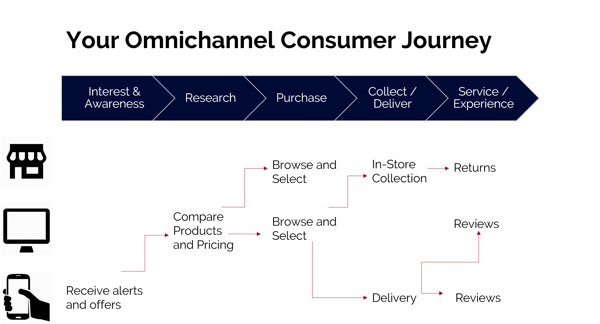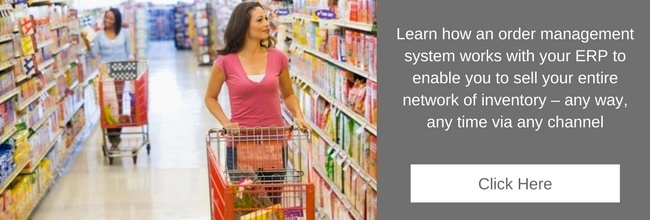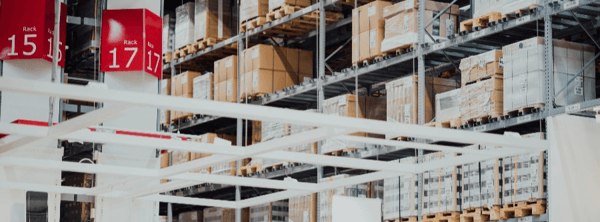What is the Key to a Successful Omnichannel Strategy for Retail?


Retail has spread over multiple channels, and instead of the simplified “bricks and mortar” shopping experience, customers can access products online, in-store, in-app, and more.
With this diversified sales landscape, we find that consumers now expect more from their retailers – instant response, fast delivery, effective communication, and on-the-ball customer service – wherever they may purchase a product.
You may have a multi-channel strategy for managing these sales in your business, but a true omnichannel approach comes from understanding and ensuring that of all your channels and operations match your customer’s journey and experience.
Before you start, assess your customer journey
Your customer uses a multichannel path to purchase:

Since your customers use multiple platforms to interact with your services at different stages, find out exactly where they are in touch with you, and when. This will ensure that you give the right service, at the right time, from marketing to sales, and within your operations and delivery processes.
It will also allow you to implement the correct, useful, practical integrations into your strategy.
Integrate your channels for a smoother path to purchase
Customers may find you online but choose to purchase in-store. They may use your online ordering system to purchase after spending time browsing in-store, and they may use a mobile app or site to do all of the above.
Ensuring you have the inventory available for all these interactions may become unwieldy without enterprise wide inventory availability, order management, and ability to fulfil, return and manage orders in any way your customer requires:
Aligning your warehouse to your omnichannel strategy
Matching demand is critical, and your Omnichannel approach must consider the new demands on your warehouse and distribution centers, informed by your customer’s path to purchase.
Your integration and optimisation should focus specifically on your ability to meet your customers’ demands with your outbound functions:
- Inventory Management and Control
- Outbound Order Processing
- Shipping and Loading

Read more about Warehouse Management Systems and their functions.
What ERP-improvement options you have for omnichannel retail strategies?
Traditional ERP software not equipped to handle omnichannel orders which are made on online and offline channels and the enterprise wide visibility to support these orders.
Your aim should be to unlock the functionality you need to accommodate the channels, delivery times, customer demands, and turnaround that you need to continue growth within your business.
Your options:
Move forward with your existing ERP as-is.
However, a more flexible, integrated system may help you to achieve your business growth goals by allowing you faster communications, more reliable information, and quicker delivery turnaround times.
Replace your ERP entirely.
You may decide to throw out your existing systems and implement an order management system to complement ERP in your organisation or replace your ERP which, may not be entirely necessary.
Add an order management layer to your existing ERP for greater functionality.
Meet your customers’ multi-channel expectations by adding to your legacy ERP, and enjoy the significant efficiency benefits related to the management of retail information systems.
Get the full picture:
Find out more about how an order management system can benefit your business on each step of the customer journey with Manhattan Associates' whitepaper:
TAGS
- WMS (51)
- Warehouse Best Practice (46)
- Implementing a WMS (29)
- Managing your warehouse (19)
- Omni Channel (18)
- eCommerce (18)
- Blog (16)
- Supply Chain Best Practice (16)
- Customer Journey (9)
- Mid-Level (8)
- Warehouse optimisation (7)
- General Tips (5)
- Industry General (5)
- Information (5)
- Trends (5)
- managing your Supply Chain (5)
- saudi arabia (5)
- Press Release (4)
- smart warehouse (4)
- 3PL (3)
- News (3)
- ERP (2)
- Entry-level (2)
- ROI (2)
- Case Study (1)
- OMS (1)
- Picking (1)
- Solution-Specific (1)
- Transport Management System (1)
Take A Look At The Results Of A Successful WMS Implementation.
See how Tarsus Distribution, in collaboration with SCJ boost overall efficiency by 60%




